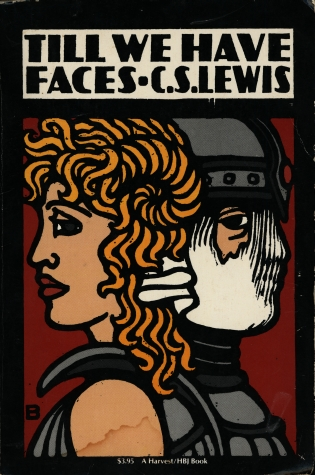

Orual suffers with the knowledge that she destroyed her sister's happiness and marriage, through misapplied love and jealousy. When Psyche obeys Orual, the God has no choice but to banish Psyche. She brings Psyche the means to see him, and threatens, cajoles, and coerces her, until Psyche agrees reluctantly, out of pity and love for her sister. Orual argues that the God must be a monster, or he would not hide his face.

Orual urges Psyche to do the one thing the God has commanded her not to: to sneak a peek when he comes to their marriage bed. She almost sees something, but then it vanishes, like a mist. Orual tries to rescue Psyche, who says she doesn't need to be rescued, and that she lives in a beautiful castle, which Orual can't see. Although disfigured herself, and covering her facial deformity with a mask throughout the book, Orual loves her beautiful half-sister Psyche and when Psyche is sent as a human sacrifice, at the command of Ungit ( Aphrodite), to her son, the unseen "God of the Mountain" ( Cupid), Orual feels wounded and betrayed. It begins as the complaint of an old woman who is bitter at the injustice of the gods. The story tells the Ancient Greek myth of Cupid and Psyche, from the perspective of Orual, Psyche's older sister. This was his last novel and, he considered it his most mature, written in conjunction with his wife, Joy Davidman. The people of the primitive city-state of Glome have occasional contact with civilized Hellenistic Greece. The book is set in the fictional kingdom of Glome. The first part of the book is written from the perspective of Psyche's older sister Orual, as an accusation against the gods. It is a retelling of the Greek myth of Cupid and Psyche, which had haunted Lewis all his life, and which is itself based on a chapter of The Golden Ass of Apuleius. Till We Have Faces: A Myth Retold is a 1956 novel by C. Please help to improve this article by introducing more precise citations. This article includes a list of references, but its sources remain unclear because it has insufficient inline citations.


 0 kommentar(er)
0 kommentar(er)
